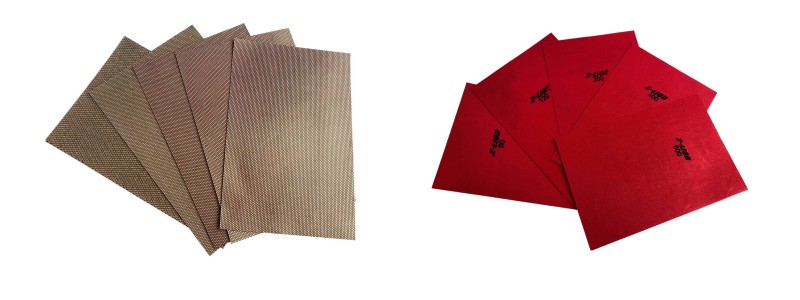Polishing composite is a critical step in achieving a smooth, beautiful finish while improving the material’s durability and performance. The process requires careful consideration of material selection, tools and techniques to ensure optimal results. This article outlines the basic steps and considerations for effectively polishing composite materials.
1. Material Selection
Choose the right composite material
Before delving into the polishing process, the appropriate composite material must be selected based on the intended application. Different composite materials, such as fiberglass, carbon fiber or resin-based materials, have unique properties that affect polishing methods.
Polishing tools
Choosing the right polishing tool is crucial to getting the finish you want. Tools can be divided into hand tools and machine tools:
- Hand tools: These tools are great for polishing small areas or complex shapes. Common hand tools include:
- Hand sander: Ideal for detailed work and intricate designs.
- Polishing pad: Soft pad that can be used with polishing compound for a finer finish.
- Machine tools: These are better suited for larger areas and flat surfaces, providing consistent results with less effort. Common machine tools include:
- Orbital sander: Great for achieving a smooth finish on flat surfaces.
- Rotary polisher: Very effective for high gloss finishes, especially on larger composite parts.
Polishing materials
The choice of polishing material is equally important. The most commonly used materials include:
- Sandpaper: Sandpaper comes in a variety of grit sizes and is essential for initial surface preparation. First use a coarser grit (e.g. 80-120) to remove material, then use a finer grit (e.g. 400-2000) for smoothing.
- Sanding discs: These are used for more powerful material removal and can be attached to a machine tool. Diamond sanding discs are particularly effective on composite materials due to their durability and efficiency.
- Polishing Compounds: These compounds are used with polishing pads to achieve a high gloss finish. They come in a variety of formulations, including abrasive and non-abrasive options.
2. Basic Polishing
Basic polishing is the first step in the polishing process and is intended to prepare the composite surface for finer finishing. This stage is crucial to remove defects such as burrs, height differences and surface irregularities.
Main goals of basic polishing
- Surface preparation: Creates a smooth base for subsequent polishing stages.
- Material removal: Eliminate any rough spots or imperfections that may affect the final finish.
- Thermal Management: Prevents overheating, which can cause composite materials to thermally warp or crack.
Basic polishing tools and materials
Sandpaper
The main tool for basic polishing is sandpaper, which comes in a variety of grit sizes.
For the initial stage, it is recommended to use coarse sandpaper.
Coarse grit sandpaper (e.g., 60-120 grit): This is great for removing obvious imperfections and burrs. It effectively removes material while preparing the surface with finer grit.
Polishing tools
- Hand tools: A hand polishing pad can be used for more control, especially on small or intricate areas.
- Machine tools: For larger surfaces, an orbital sander or rotary tool can speed up the process, but care must be taken to avoid excessive heat build-up.
Basic polishing process
Surface cleaning:
Before you begin, make sure the composite surface is clean and free of dust or debris. This prevents scratches from occurring during the polishing process.
Preliminary polishing:
Start with coarse sandpaper. Hold the sandpaper or sanding tool firmly and apply even pressure to the surface.
Stability: Keeps the sandpaper stable to maintain a consistent contact area. This helps achieve an even finish and prevents uneven wear.
Uniform polishing force:
Apply even polishing force throughout the process. Avoid excessive pressure as this may cause overheating and potential thermal damage to the composite material.
Technique: Use a circular or back-and-forth motion, making sure to cover the entire area without staying at one point for too long.
Monitoring temperature:
Check surface temperature regularly. If it gets too hot to touch, pause to let it cool. Excessive heat can cause thermal buckling or cracking, compromising the integrity of the composite material.
3. Intermediate Polishing
Intermediate sanding is used to remove scratches and blemishes left behind by the basic sanding process. This step is essential to obtain a smooth and even surface, which is essential for the final polishing stage.
Main goals
- Scratch removal: Effectively removes any visible scratches or blemishes on surfaces.
- Surface refinement: Preparing the composite material to achieve a high-quality surface finish during the final polishing stage.
- Material preservation: Avoid excessive wear of sandpaper and prevent local hollowing of composite materials.
Tools and materials for intermediate grinding
Sandpaper
For intermediate sanding, medium-coarse sandpaper is recommended. The granularity is typically 120 to 200, depending on the degree of refinement required.
Medium coarse sandpaper (120-200 Grit): This type of sandpaper is effective at removing scratches from the previous stage of sanding while still being gentle enough to avoid excessive removal of material.
Intermediate polishing process
Surface inspection:
Before starting, check the surface for any imperfections left by the base sanding. This will help you identify areas that need more attention.
Grinding technology:
Start with medium-coarse sandpaper. Hold the sandpaper or sanding tool firmly and apply even pressure to the surface.
Stability: Keeps the sandpaper stable to maintain a consistent contact area. This helps achieve an even finish and prevents uneven wear.
Avoid over-sanding:
Be careful not to put too much pressure on an area or leave it on for too long. Over-sanding can cause localized voids that compromise the integrity of the composite material.
Technique: Use consistent motions, such as circular or back-and-forth sanding, to ensure an even sanding across the entire surface.
Monitor sandpaper wear:
Check the condition of the sandpaper regularly. If worn excessively, replace it to maintain effective sanding performance. Worn sandpaper will cause uneven results and may not remove scratches effectively.
Surface Cleaning:
After completing the intermediate sanding, clean the surface to remove dust or debris. This ensures that the final polishing stage is effective and free of contaminants.
4. Fine Polishing
The purpose of fine polishing is to refine the surface of the composite material to a high gloss. This stage is crucial to remove any small imperfections that may have been overlooked during the previous sanding stages to achieve a flawless look.
Main goals
- Scratch removal: Effectively removes any scratches or blemishes caused by intermediate sanding.
- Surface smoothness: Achieve smooth and flat surfaces, enhancing the overall aesthetic and functional qualities of composite materials.
- Prevent damage: Avoid excessive sanding, which may cause local deformation or the formation of sand holes.
Finely polished tools and materials
Finer grit sandpaper (400-2000 grit): This type of sandpaper is designed for the final stages of polishing. It effectively removes minor scratches and prepares the surface for a high-gloss finish.
5. Key Considerations in Composite Polishing
- Choose the right grinding tools and materials: Choose tools specifically designed for composites to increase efficiency and reduce wear.
- Ensure uniform grinding force: Maintain consistent pressure throughout the grinding process for a uniform surface finish.
- Avoid over-grinding and loss of sandpaper: Monitor grinding duration and pressure to prevent excessive wear of sandpaper and material.
- Prevent heat bending and heat cracking: Use cooling techniques or intermittent grinding to control heat build-up and protect composite integrity.
- Choose the appropriate sandpaper thickness: Match the sandpaper grit to the specific requirements of the material and desired finish to optimize results.
- Pay attention to the generation and treatment of sand holes: Promptly identify and address any sand holes to maintain surface quality and prevent defects.
6. In Conclusion
Composite grinding is a precise and technical process. Attention to detail and adherence to best practices are critical to achieving the best surface quality and performance of the final product.
Post time: Oct-12-2024


